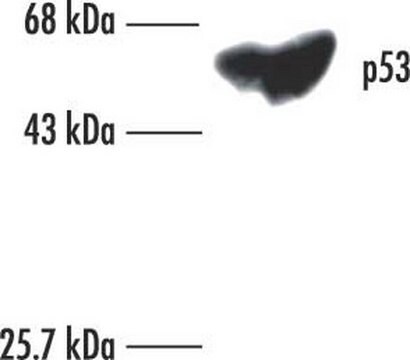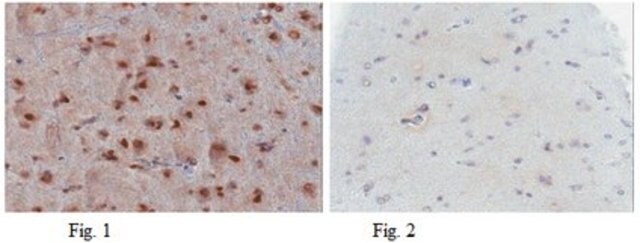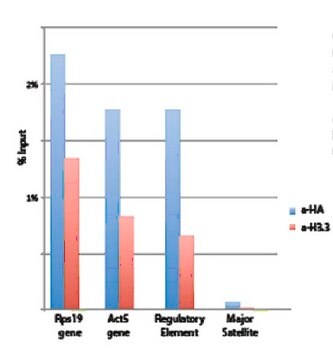MABE327
Anti-p53 (pantropic) Antibody, clone DO-1
clone DO-1, from mouse
Synonym(e):
Cellular tumor antigen p53, Antigen NY-CO-13, Phosphoprotein p53, Tumor suppressor p53
About This Item
Empfohlene Produkte
Biologische Quelle
mouse
Qualitätsniveau
Antikörperform
purified immunoglobulin
Antikörper-Produkttyp
primary antibodies
Klon
DO-1, monoclonal
Speziesreaktivität
human
Methode(n)
immunocytochemistry: suitable
immunofluorescence: suitable
immunohistochemistry: suitable
immunoprecipitation (IP): suitable
western blot: suitable
Isotyp
IgG2aκ
NCBI-Hinterlegungsnummer
UniProt-Hinterlegungsnummer
Versandbedingung
wet ice
Posttranslationale Modifikation Target
unmodified
Angaben zum Gen
human ... TP53(7157)
Allgemeine Beschreibung
Spezifität
Immunogen
Anwendung
Epigenetik & nukleäre Funktionen
Zellzyklus, DNA-Replikation & -Reparatur
Immunohistochemistry Analysis: A 1:1,000 dilution from a representative lot detected p53 (pantropic) in human colorectal adenocarcinoma tissue and in human prostate cancer tissue.
Immunofluorescence Analysis: A 1:1,000 dilution from a representative lot detected p53 (pantropic) in human colorectal cancer cells.
Immunoprecipitation Analysis: A representative lot was used by an independent laboratory in radiolabelled HOS cell lysate (Vojtesek, B., et al. (1995). 71(6):1253-1256.).
Immunohistochemistry Analysis: A representative lot was used by an independent laboratory in primary breast carcinoma tissue (Beck, T., et al. (1995). Gynecol Oncol. 57(1):96-104.).
Qualität
Western Blot Analysis: 1 µg/mL of this antibody detected p53 (pantropic) in 10 µg of A431 cell lysate. This antibody detects isoforms 1, 2, and 3.
Zielbeschreibung
Verlinkung
Physikalische Form
Lagerung und Haltbarkeit
Hinweis zur Analyse
A431 cell lysate
Sonstige Hinweise
Haftungsausschluss
Sie haben nicht das passende Produkt gefunden?
Probieren Sie unser Produkt-Auswahlhilfe. aus.
Empfehlung
Lagerklassenschlüssel
12 - Non Combustible Liquids
WGK
WGK 1
Flammpunkt (°F)
Not applicable
Flammpunkt (°C)
Not applicable
Analysenzertifikate (COA)
Suchen Sie nach Analysenzertifikate (COA), indem Sie die Lot-/Chargennummer des Produkts eingeben. Lot- und Chargennummern sind auf dem Produktetikett hinter den Wörtern ‘Lot’ oder ‘Batch’ (Lot oder Charge) zu finden.
Besitzen Sie dieses Produkt bereits?
In der Dokumentenbibliothek finden Sie die Dokumentation zu den Produkten, die Sie kürzlich erworben haben.
Unser Team von Wissenschaftlern verfügt über Erfahrung in allen Forschungsbereichen einschließlich Life Science, Materialwissenschaften, chemischer Synthese, Chromatographie, Analytik und vielen mehr..
Setzen Sie sich mit dem technischen Dienst in Verbindung.








